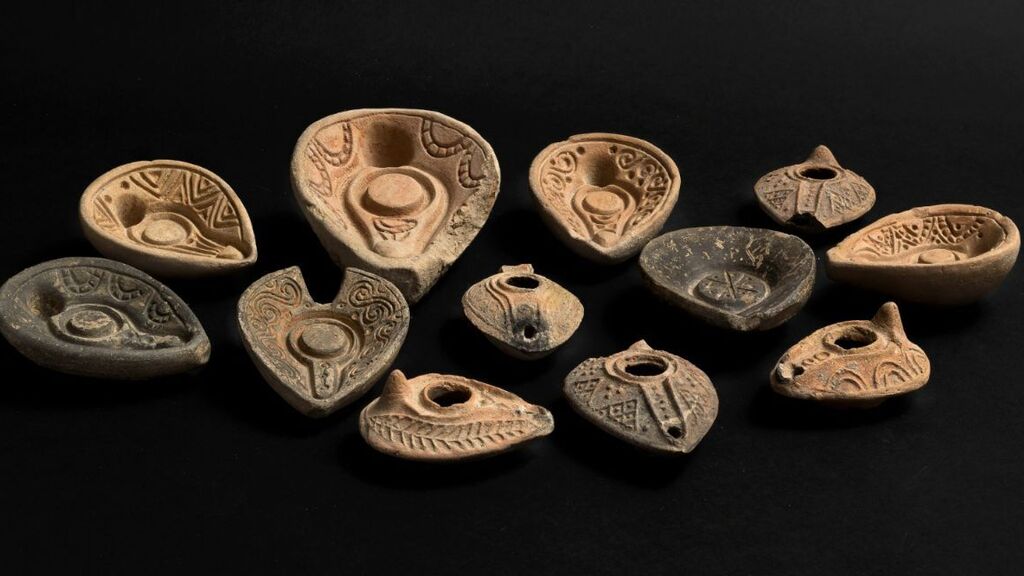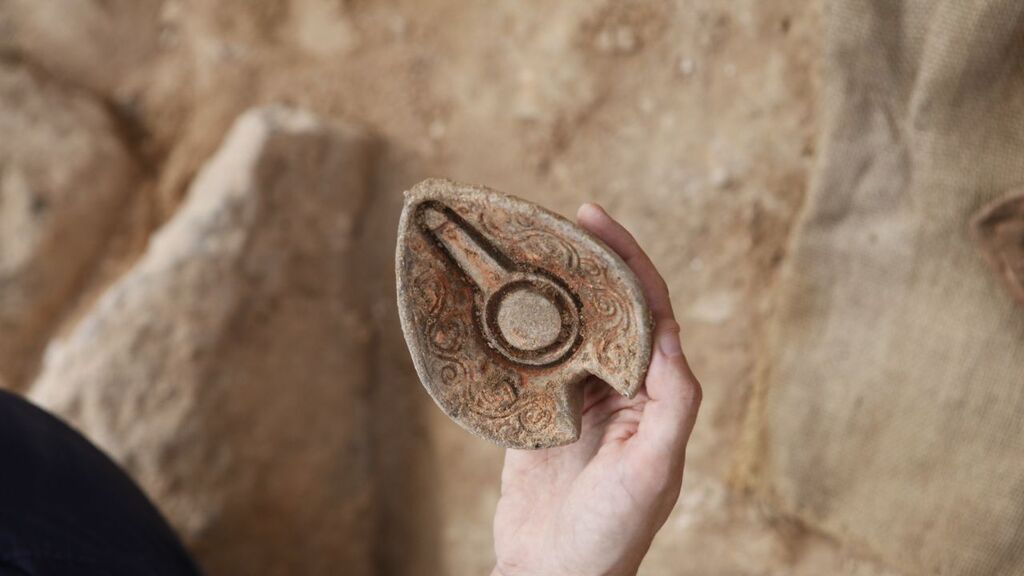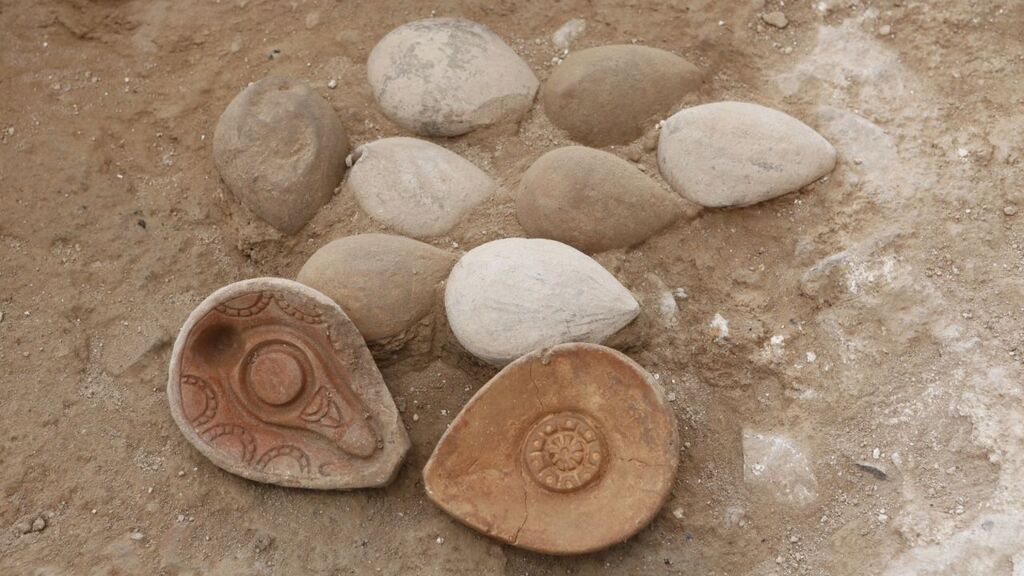A rare cache of artifacts dating back more than 1,00 years has been uncovered in the northern city of Tiberias, including perfectly preserved clay molds for candles.
The trove was uncovered during an archeological excavation conducted by the Hebrew University of Jerusalem, and offers historians further understanding of the people who lived on the shores of the Sea of Galilee in the early Islamic period between the 7th and 11th centuries.
3 View gallery


Perfectly preserved clay candle molds were uncovered in archeological excavation in Tiberias
(Photo: Hebrew University of Jerusalem)
The discovery of the clay artifacts, many apparently unused, could confirm that a candle industry operated there.
One of the most important findings included a stash of 10 candle molds that survived intact and are adorned by geometric or floral designs.
One of the molds was engraved with the word "Allah" in Arabic while another was decorated with a star similar to the Star of David (although researchers said it was unrelated to the Jewish festival of Hanukkah).
The remains of two homes were also uncovered, as well as adjacent water canals and furnaces used in light industry, in particular in the production of clay candle holders.
According to Dr. Oren Gutfeld, who conducted the dig along with Michal Haber and Tal Rogovski and with assistance from the Israel Antiquities Authority, the findings show a unique lifestyle that combined residential living with industry.
3 View gallery


A clay mold for oil candles was found during an archeological excavation in Tiberias
(Photo: Hebrew University of Jerusalem)
"We found cesspits nearby and a manmade well that was dug 3.5 meters down to the water level of the lake," Gutfeld said.
"Based on architectural specimens around the well, especially the small pillars and crowns, it appears to have been situated in the middle of a courtyard with fine stone decorations."
He expressed the belief that some of the findings were evidence of the aftermath of a deadly earthquake in 1033 that destroyed the city.
The area was shaken by a string of earthquakes during the 11th century that destroyed lives and property. Some were so powerful, historians said, that they they were felt from Syria to Egypt. Tiberias was hard hit, with many buildings destroyed.
Archeologists believe the new findings confirm the assessment that the city was abandoned after the severe quakes and that residents resettled further north where the crusader town by the same name was located.
3 View gallery


Early Islamic period candle molds were found in an archeological excavation in Tiberias
(Photo: Hebrew University of Jerusalem)
"These artifacts allow us to explore the process of clay dish production made in molds," said Liza Lurie, curator of the Islamic Arts and Archeology exhibit at the Israel Museum.
"We can follow the process from the early stage when clay is put inside the mold and the process of decorating the dish, through its forging inside the furnace and until its completion," she said.
A cache of iron dishes was found 20 years earlier in the same area. It is believed to be the largest Islamic iron dish collection in the world and is on display at the Israel Museum in Jerusalem.

